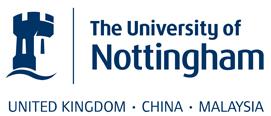- View more resources from this publisher
 Centre for Research in Mathematics Education (CRME)
Centre for Research in Mathematics Education (CRME)
MARS: number: calculation
This collection features fifteen resources on the topic of calculation.
The resources feature:
- Concept development lessons that focus on developing conceptual understanding of significant mathematical ideas.
- Problem solving lessons that focus on the application of previously learned mathematics to non-routine unstructured problems.
- Tasks that provide mathematically rich problems that come with work for students to peer assess.
The Mathematics Assessment Resource Service (MARS) is a collaboration between the University of California at Berkeley and the Shell Centre team at the University of Nottingham, with support from the Bill and Melinda Gates Foundation. The team is known around the world for its innovative work in maths education.
Resources
Filter
Translating between fractions, decimals, and percents
This lesson develops the concept of converting between and ordering fractions, decimals, and percentages. The lesson uses area and linear models of fractions, decimals, and percentages to understand equivalence.
The main activity is a collaborative exercise. Students must collect together cards that show a...
Using standard algorithms for number operations
This lesson develops the concept of making sense of the standard algorithms for addition, subtraction, multiplication, and division of positive integers. In particular students will work on the following areas:
- Improving conceptual understanding of why and how the algorithms work.
- Developing...
Increasing and decreasing quantities by a percent
This lesson develops the concept of percentage increase and decrease. In particular students will develop their understanding of:
- Translating between percentages, decimals, and fractions.
- Representing percent increase and decrease as multiplication.
- Recognizing the relationship...
Using positive and negative numbers in context
This lesson develops the concept of using directed numbers in the practical context of temperatures and temperature change. Particular attention is paid to the use of directed numbers on number lines to explore the structures:
- Starting temperature + Change in temperature = Final temperature
- ...




